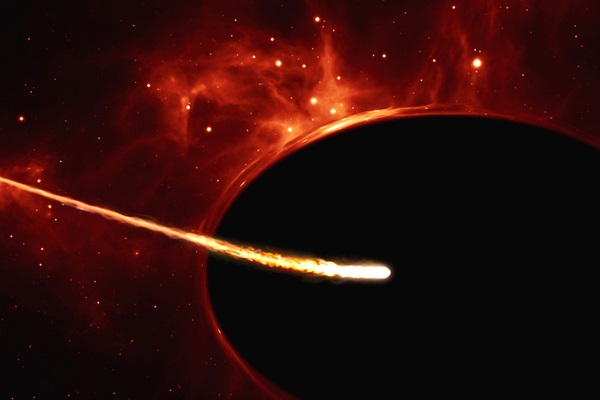Key Takeaways:
- Spaghettification is attributed to tidal forces, which are defined as the differential gravitational pull exerted across an object's length.
- The tidal acceleration (`a`) experienced by a body of length (`d`) near a mass (`M`) is quantified by the equation `a = 2GMd/R^3`, where `R` is the distance to the center of the mass.
- Calculations reveal that a person falling into a stellar-mass black hole (e.g., 1 solar mass) experiences an extremely high tidal acceleration (approximately 19.6 billion m/s²).
- Conversely, an object crossing the event horizon of a supermassive black hole (e.g., 100 million solar masses) experiences a significantly lower tidal acceleration, even less than that felt on Earth (approximately 0.0000019 m/s²), precluding spaghettification.
Why would someone falling into a stellar-mass black hole be spaghettified, but someone crossing the event horizon of a supermassive black hole would not feel much discomfort?
Stephens City, Virginia
First, what exactly causes spaghettification? This process is the result of tidal forces, or the difference in gravity between two points.
As it turns out, there is a relatively simple equation that describes the tidal acceleration that a body of length d would feel, based on its distance from a given object with mass M: a = 2GMd/R3, where a is the tidal acceleration, G is the gravitational constant, and R is the body’s distance to the center of the object (with mass M).
For a baseline, let’s calculate the tidal acceleration that an approximately 6-foot-tall (1.8 meters) person feels between their head and their feet while on the surface of Earth. Plugging in the numbers, it comes out to about 0.0000055 meter/second2. Now, how would tidal forces affect that same person falling into a stellar-mass black hole of 1 solar mass and an event horizon radius of 1.8 miles (2.9 kilometers), versus that same person falling into a supermassive black hole that is 100 million solar masses with an event horizon radius of 183 million miles (295 million km)?
In the former case, the tidal acceleration is around 19.6 billion m/s2. And for the supermassive black hole, it’s only about 0.0000019 m/s2.
So, for a person falling feet first into a stellar-mass black hole, the tidal forces stretch them out into a long, thin line resembling spaghetti. But when falling into a supermassive black hole, the tidal acceleration they feel is even smaller than what we experience on Earth!
Associate Editor










